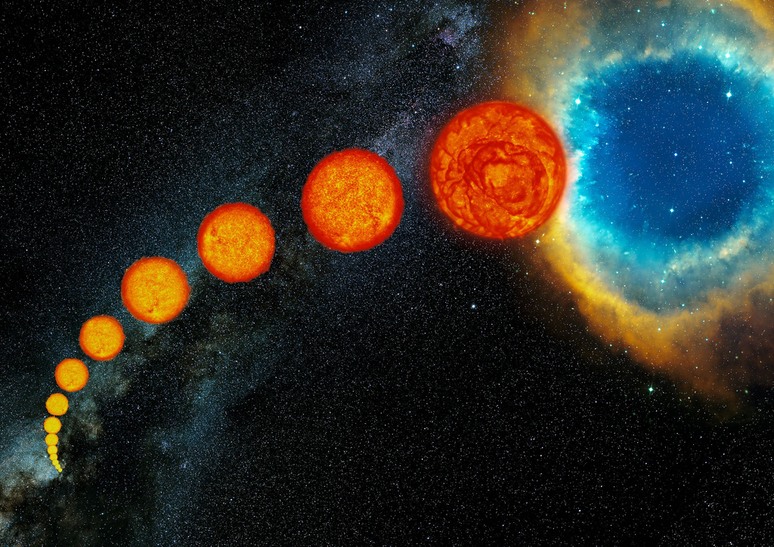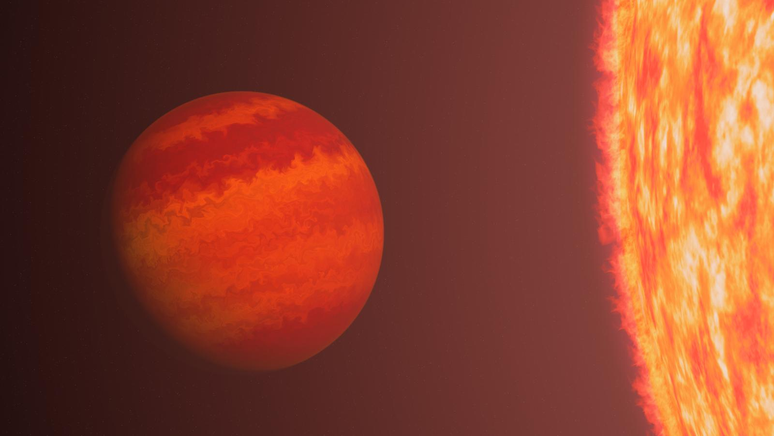It turned out that the exoplanet would have to lose its atmosphere, but would have retained the gas layer. That’s why scientists called it “Planet Phoenix”
The exoplanet TIC365102760 is so exposed to radiation from its star that it should have become a rocky, bare world. atmosphere. A new study led by Sam Grunblatt, an astrophysicist at Johns Hopkins University, shows that’s not what happened: The planet still has a new gaseous atmosphere, defying what’s known about planetary evolution under extreme conditions.
- Meet planets as cute as cotton candy
- Deadly Exoplanets: Discover 5 worlds that would be fatal to humans
Because of the planet’s survival from the star’s radiation, researchers named it – very appropriately – the Phoenix in reference to the bird that was reborn from its ashes into the world. Greek mythology. “This planet is not evolving the way we thought. It appears to have a much larger and less dense atmosphere than we would expect for these systems,” Grunblatt noted.
This “planetary phoenix” is a hot Neptune, a category that includes exoplanets similar to the icy world of our Solar System despite being much closer to their stars. In this case, TIC365102760 is smaller, older and hotter than scientists thought possible.
With a size equivalent to 6.2 times that of Earth, the planet takes 4.2 Earth days to complete one revolution around the star and is six times closer to it than Mercury is to the Sun. Its age, the high temperature and low density of the “Phoenix”. “lead scientists to think that atmospheric loss was slower than it should have been.

“It is the smallest planet we have ever found orbiting one of these red giants, and probably the lowest mass planet orbiting a giant star. [vermelha] that we’ve never seen,” Grunblatt added. “That’s why it seems very strange. We don’t know why it still has an atmosphere while other “hot Neptunes,” which are much smaller and much denser, appear to lose it in much less extreme environments,” he noted.
Although the atmosphere has resisted, the planet is not expected to have the same luck. According to the team, this world should survive for another 100 million years; then it will begin a spiral descent towards its star, and will end up destroyed.
The findings could help scientists better understand processes in the atmospheres of worlds like Earth. For example, in a few billion years the Sun will expand, swallowing up our planet and other rocky worlds. For the team, perhaps TIC365102760 indicates that the Earth’s atmosphere evolve differently than expected.
The article with the results of the study was published in the journal The astronomical journal.
Source: The astronomical journal, Johns Hopkins University
Trends on Canaltech:
- Brazil x United States | Like watching the last Seleção friendly before the Copa América
- The JBL box survives after 25 days under the mud in RS
- 7 romantic films to watch together on Valentine’s Day
- Galaxy A35 Review | The affordable mid-range Samsung mobile phone
- 7 episodes of curious series on Valentine’s Day
- 8 AI to create animations
Source: Terra
Rose James is a Gossipify movie and series reviewer known for her in-depth analysis and unique perspective on the latest releases. With a background in film studies, she provides engaging and informative reviews, and keeps readers up to date with industry trends and emerging talents.






